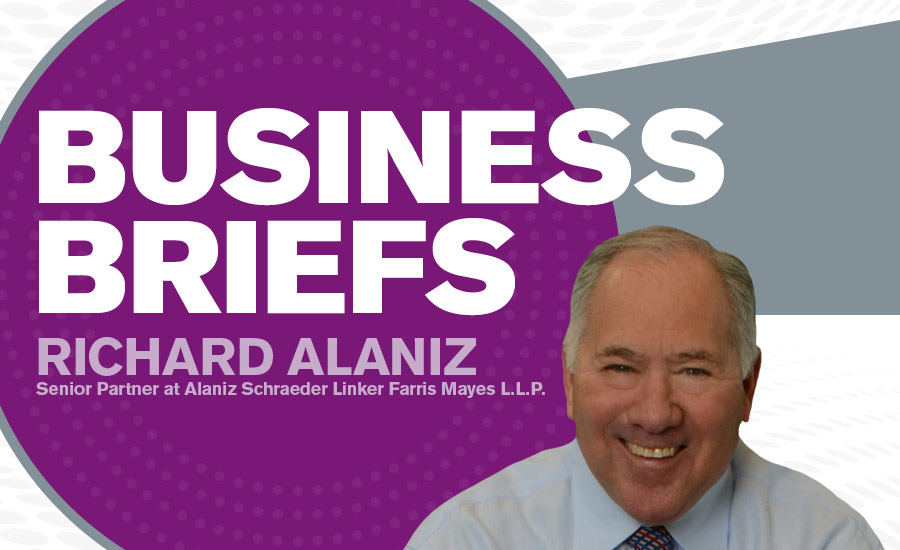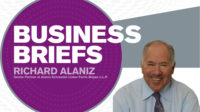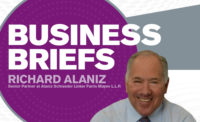A $15 an hour minimum wage should be mandatory, according to Democratic presidential candidate Bernie Sanders. “Millions of Americans are working for totally inadequate wages,” Sanders states on his website. “We must ensure that no full-time worker lives in poverty. The current federal minimum wage is starvation pay and must become a living wage. We must increase it to $15 an hour over the next several years.”
An increasing number of cities and states are beginning to agree, including California and New York, both of which recently passed $15 an hour minimum wage laws. However, the California Chamber of Commerce called the increase “a job killer.” “This is too much too fast,” said California Chamber President and CEO Allan Zaremberg. “It is unfortunate the legislature didn’t take advantage of the opportunity to address the issue in a more balanced manner.”
As more politicians and union-affiliated groups push for higher minimum wages, employers need to prepare now for the significant financial, compliance, and regulatory challenges these changes bring.
A RISING MINIMUM WAGE
According to the National Conference of State Legislatures (NCSL), 29 states and Washington, District of Columbia, have minimum wages above the federal minimum wage of $7.25 per hour. When federal and state law have different minimum wage rates, the higher standard applies.
So far, California and New York have enacted laws that will increase those states’ minimum wages to the highest in the country. In April, California Gov. Jerry Brown signed the bill that increased the state’s hourly minimum wage to $15 by 2022 for companies with more than 25 employees, and by 2023 for smaller businesses. The increase will start in 2017, when the California minimum wage will rise from $10 an hour to $10.50. However, the state can stop the wage increases in the event of a recession or economic downturn.
And California isn’t alone. In New York, lawmakers approved a $15 an hour minimum wage. It will take effect in New York City by 2019 for companies that have at least 11 workers, and in 2020 for others. Businesses in the suburbs have until 2022 to comply. In upstate New York, the minimum wage will increase to $12.50 an hour in five years, and then continue rising until it hits $15.
On April 4, New York Gov. Andrew M. Cuomo signed the minimum wage legislation, along with a 12-week paid family leave policy. “By moving to a $15 statewide minimum wage and enacting the strongest paid family leave policy in the nation, New York is showing the way forward on economic justice,” Cuomo announced. “These policies will not only lift up the current generation of low-wage workers and their families, but ensure fairness for future generations and enable them to climb the ladder of opportunity. I am proud to sign these programs into law, because they will ensure a stronger, fairer, and brighter future for all New Yorkers.”
These new laws will have a broad impact. Last year, 53.6 million workers in the U.S. were paid less than $15 an hour, according to the Wall Street Journal. In New York state alone, the $15 minimum wage will increase the earnings of more than 2.3 million New Yorkers, Cuomo’s office said.
These laws follow on the heels of some activist and union-related movements, such as “Fight for $15,” a group that is pushing for a national $15 an hour wage, along with unionization rights. The group’s motto is “1,000s of workers. 100s of cities. 1 movement. $15 and a union.”
But while some states are raising their minimum wages, others are pushing back. For example, North Carolina recently passed a law that limited the ability of cities and towns to set minimum wages. In February, Alabama lawmakers passed a similar law to ban local governments from establishing local minimum wages. That was in response to a law in Birmingham that would have raised the minimum wage to $10.10 in the city.
WHAT EMPLOYERS NEED TO KNOW
Obviously, the biggest repercussions of the rising minimum wage will be financial, as companies struggle to remain competitive and profitable with skyrocketing worker costs. But there are other considerations as well, including regulatory, paperwork, and compliance. Among the things companies need to know:
• Understand the Changes
Different states have different timelines for the increase in minimum wage. Even states that aren’t aiming for $15 have made increases. According to the NCSL, Rhode Island raised its minimum wage to $9.60 effective Jan. 1. Washington, District of Columbia, will increase its minimum wage to $11.50 on July 1. And the minimum wage in Minnesota will increase to $9.50 on Aug. 1 for large employers, and $7.75 for small employers.
Employers need to prepare now for actions that have been already legislated, or could be in the works. It’s important to plan ahead, work with human resources staff and legal counsel to understand what changes may be on the horizon, and proactively prepare for them.
• Review Employee Classifications
While the minimum wage affects workers who are nonexempt from the Fair Labor Standards Act, new laws could also impact whether employees are classified as exempt or nonexempt. That could have far-reaching financial and human resources considerations. For example in California, in order to be exempt from overtime laws employees must earn a minimum monthly salary that is no less than twice the state minimum wage. That means employers in the Golden State need to be aware of how the minimum wage boost could impact whether employees are exempt or nonexempt.
Furthermore, separate and apart from the increase in minimum wage, the Department of Labor is expected to release its Final Rule modifying the “white collar” exemptions. This rule will more than double the salary office, executive, and professional employees must be paid in order to be classified as exempt employees. With the increased focus on wages across the country, now is a good time to conduct a thorough review of your employee classifications and other wage and hour policies.
• Posting Notice Requirements
Employers who are required to post wage notice requirements will need to update their information if their states have increased minimum wages. Some states also require written notice, which will need to be updated and disseminated.
• Improving Processes and Worker Skills
While employers can’t do anything about minimum wage increases that have been enacted, they can minimize costs and make a greater effort to become more efficient. There are several ways to approach this, including developing better workflow processes, hiring high-quality workers, and providing better training.
When employees claim violations of wage and hour laws, employers become vulnerable to regulatory action and lawsuits. In January, Bank of America paid $2.25 million to settle a lawsuit that it allegedly misclassified some employees as being exempt from California’s wage and hour laws. In that case, Zelma Brawner sued her employer, claiming that the bank failed to pay overtime, didn’t provide itemized wage statements, and violated California’s unfair labor law, among other things. According to media reports, while the bank denied the claims, it settled in order to avoid costly ongoing litigation.
• Consider Arbitration Agreements
Although arbitration agreements are not a cure-all, when implemented properly they can help insulate an employer from expensive class action wage and hour lawsuits. In light of the increased scrutiny on wage and hour issues, at the state level, federal level, and from aggressive plaintiffs’ attorneys, now may be a good time to consider arbitration agreements with class action waivers. It is important to work closely with experienced labor counsel when implementing these agreements, because there are many state-mandated technical requirements that must be met. When used properly, however, these agreements can be used to limit a company’s exposure to wage and hour liability.
As minimum wages continue to rise, the stakes will only get higher. In order to minimize the expenses and risks, employers need to prepare now.
Publication date: 5/23/2016
Want more HVAC industry news and information? Join The NEWS on Facebook, Twitter, and LinkedIn today!











